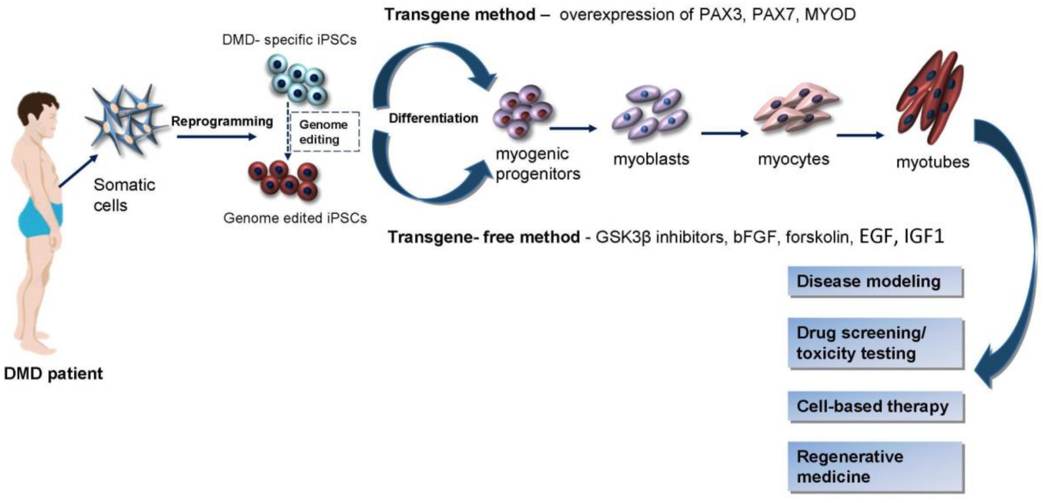Muscular Dystrophy (MDs) are a group of progressive inherited diseases that appear the loss of muscle mass and consequent loss of strength over time. MD-derived iPSCs have become unlimited models for MD pathology mechanistic studies, therapeutic drug discovery, and cell-based therapy, to supplement in vivo animal model researches.
MD is a class of muscle diseases that are characterized by progressive weakness and loss of muscle mass. MD is a type of inherited disease caused by mutations in the genes that control the body to keep muscles healthy. There are many kinds of MD (more than 30), and each of which is caused by specific genes, affects specific muscle groups, with signs and symptoms appearing at different ages, and varying degrees of severity. MDs are rare, fewer than 200,000 cases per year in the US. Common MD types include:
Duchenne MD is an X-linked recessive disorder caused by the mutations of DMD gene encoding the protein dystrophin. Many studies indicated iPSCs may offer effective tools for Duchenne MD modeling and novel drug discovery and testing. Several studies have reported skeletal muscle progenitor cells and muscle fibers were successfully generated from human MD-specific iPSCs by skeletal by serum-free and chemically defined induction by activation of Wnt signaling and/or inhibition of bone morphogenetic protein (BMP) signaling. Furthermore, a 3D complex multilineage model of artificial skeletal muscle from Duchenne MD iPSCs has been created and the model showed the key isogenic cellular constituents of skeletal muscle, including vascular endothelial cells, pericytes, and motor neurons. These iPSCs models provide excellent tools for studying the pathogenesis of MD and discovering effective drugs for the treatment of MD.
iPSC technology has been applied for cell-based therapy due to several advantages such as generating unlimited quantities of autologous cells for regenerative purposes and no ethical concerns. Transplantation of genetically corrected human iPSC-derived progenitors has been performed on mice with MD. These cells can fuse to host myofibers and exert good strength. Besides, these cells may be responsible for the restoration of the satellite cell pool, which helps to restore the regenerative capacity of the muscle and maintain sustained effects.
 Fig.1 iPSCs potential for Duchenne MD.1
Fig.1 iPSCs potential for Duchenne MD.1
At Creative Biolabs, we are skilled in using iPSC technology to construct MD disease models to accelerate the research of mechanisms of pathology and the development of novel therapy. We are committed to offering a series of top-class iPSCs services, including iPSC reprogramming, differentiation, and characterization. If you are interested in iPSC-based disease modeling and research, please contact us for more details.
Reference
For Research Use Only. Not For Clinical Use.